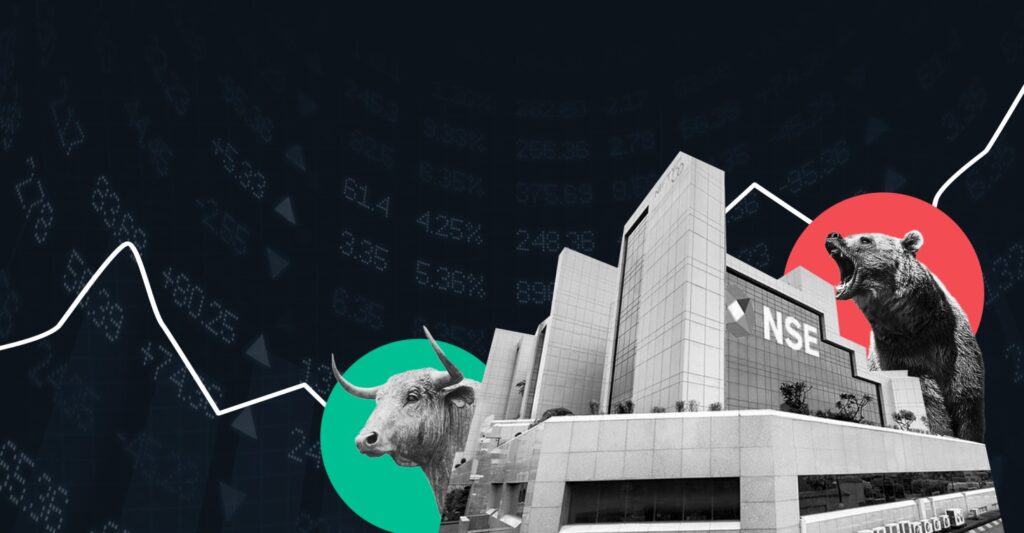Last Updated on May 25, 2022 by Neera Bhardwaj
If you trade in the stock market or invest in equity-oriented instruments, you would come across the word ‘market capitalization’. In fact, diversifying your investments across different market capitalizations may be a simple yet effective way to reduce risks and enhance the profitability potential of your portfolio.
While diversifying across market capitalisation is good, it is important to understand what it entails. In this article, we deep dive into what market capitalization is and its importance.
Table of Contents
Market capitalization meaning
Market capitalization, or market cap, can be defined in one simple line – it is the total market value of the outstanding shares of the company. However, to understand the market capitalization meaning, you need to understand two important terms:
- Market value
- Outstanding shares
Market value is the value of each share of the company. It is determined by the demand and supply of the shares. If the demand is high vis-a-vis the supply, the market value increases. If the supply is high vis-a-vis the demand, the market value reduces. The market value keeps fluctuating, and so, the market capitalisation is time-sensitive.
Outstanding shares, meanwhile, denote the number of shares issued to the public and available for trade. Remember, the outstanding shares and the total shares of the company might be different. When the company devises its share capital, it might not issue all the shares to the public. For example, a company that has a share capital of 1 lakh shares might issue only 90,000 shares for the public to trade. The remaining 10,000 might be held by the company’s promoters or founders.
So, when considering the outstanding shares, the shares that the company has actually issued would be considered. In the above example, the outstanding shares would be 90,000 and market capitalization would be calculated using the market value of these shares.
Calculation of market capitalization
The market cap meaning underlines its calculation too. There is a simple formula that calculates the market capital of a company. This formula is as follows:
Market cap = number of outstanding shares x market value of each share
Here’s a quick example to understand how the formula works:
Say, company A issues 1 lakh shares to the public. The market value of each share is Rs 250. In this case, the market capitalisation of company A would be Rs 1 lakh x Rs 250 = Rs 2.5 cr.
SEBI’s categorisation of companies based on their market capitalization
The Securities and Exchange Board of India (SEBI) governs the capital markets. It has categorized the companies listed on the stock exchange as large-cap, mid-cap and small-cap companies in terms of their market capitalisation. The following is SEBI’s categorization:
Large-cap companies
Listed companies with high market capitalization ranking between 1 and 100 on the stock exchange are called large-cap companies. Common examples of such companies include Reliance, Infosys, HDFC Bank, TCS, and Hindustan Unilever among others.
Mid-cap companies
Listed companies with moderate market capitalization, ranking between 101 and 250 on the stock exchange are called mid-cap companies. Common examples include Jindal Steel & Power, Hindustan Petroleum Corporation Limited (HPCL), MRF, Godrej Properties, and Adani Power among others.
Small-cap companies
Companies with market capitalization at 251 and above on the stock exchange are those that are called small-cap companies. Examples include Tanla Platforms, Bajaj Electricals, Indiabulls Housing Finance, Central Bank of India, and Happiest Minds Technologies among others.
Making investment strategies using market capitalization
Stocks issued by companies are categorized according to the company’s market cap meaning. So, large-cap companies issue large-cap stocks, mid-cap companies issue mid-cap stocks, and small-cap companies issue small-cap stocks. Stocks across different market capital segments have different risk-return profiles.
Large-cap stocks
Large-cap stocks belong to companies that have already established themselves in the market. Such companies have a strong legacy and are stable players in the economy. Even in the case of a market downturn, large-cap companies would be better suited to weather out the volatility. Large-cap stocks, therefore, are quality or blue-chip stocks that have a stable risk-return profile.
Mid-cap stocks
Mid-cap companies are those that are in their expansion stage. They are not yet in the large-cap league but are steadily growing towards it. Mid-cap stocks have a higher risk-return profile compared to large-cap stocks but lower levels compared to small-cap ones.
Small-cap stocks
Companies that have launched themselves in the market in recent years belong to the small-cap category. They are in their growth stages, and so, their stocks have the highest growth potential. However, in a downswing, the stocks are highly volatile as growing companies are hit the hardest if the market trends reverse for the worse. Small-cap stocks, thus, have a high risk-return profile.
By understanding the different types of stocks based on their market capitalization, you can devise your investment strategy. If you are an aggressive risk-taker, you can invest in small-cap stocks or small-cap mutual funds. On the other hand, if you want to play safe, large-cap stocks or funds would be a suitable choice. You can also opt for investment in all three market capitalizations for diversification.
One of the ways to devise your investment strategy is by understanding the different types of stocks based on their market capitalization. Click To TweetChanges in market capitalization
The market capitalization of companies change when:
- There is a drastic change in the market value of the shares
- The company opts for share buybacks, rights issues, bonus shares, and so on
- There are convertible warrants which convert to equity at a pre-defined date
Importance of market capitalization
The concept of market capitalization is important for investors and other stakeholders of the company. Here are some reasons why:
It helps investors assess the risk-return profile of a stock
As an investor, you can check the company’s market capitalization to assess its size. This, in turn, helps you assess the risk-return profile of your investment. For example, large-cap companies are more stable compared to mid-cap or small-cap ones. As such, if you invest in large-cap stocks, the risks would be lower and returns would be more stable. On the other hand, small-cap stocks, though risky, can offer attractive returns in a market upswing.
You can assess the risk-return profile of your investment by checking the company's market capitalization. Click To TweetHelpful in takeovers
Companies contemplating a takeover use the targeted company’s market capitalization metric to assess if the takeover would prove profitable or not.
Determines a company’s worth
In the market capitalization formula, it is the market value of the stocks that usually changes. As such, it helps analysts and investors estimate the worth of a company. Large-cap companies are perceived to be high-worth companies as they have a large capital base and a good market value.
Understand what market capitalization is all about, how it is determined and how it affects your investments. Create a diversified portfolio with securities from different market capitalizations so that you can expose your investments to returns across all three market cap segments.
- How To Declare Mutual Funds in ITR & Disclose Capital Gains in India? - Jun 6, 2025
- How To Sell or Exit Your Mutual Funds in India? - Jun 6, 2025
- Fund of Funds (FOF): Meaning, Types & Advantages - May 13, 2025





